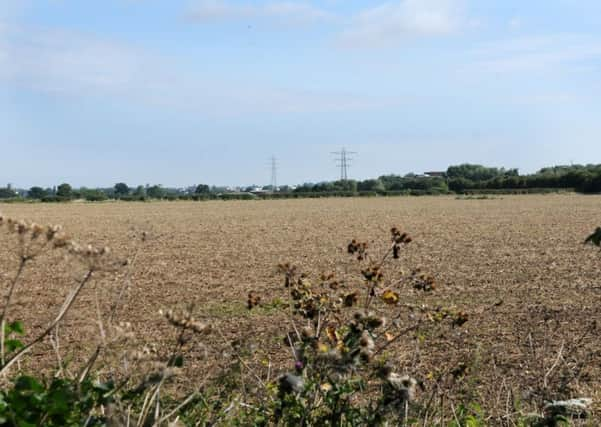Asps and Gallows Hill appeals upheld


The major housing sites were refused by councillors in 2014, but have now been granted permission by the Secretary of State and planning inspector to address the district’s housing shortages.
The decisions could throw Warwick District Council’s Local Plan for housing into disarray and meetings between planning officers and councillors have been held since the news was announced on Friday afternoon.
Advertisement
Hide AdAdvertisement
Hide AdThe Asps Farm site between Europa Way and Banbury Road now has permission for up to 900 homes, a primary school and Park and Ride facility with 500 parking spaces after the Secretary of State overruled the council’s refusal.
A planning application, described as setting out the district’s first garden suburb just south of Warwick Technology Park, was refused in 2014 - a decision which was upheld by a planning inspector.
A second application at Gallows Hill joins the northern part of the Asps site and outlined up to 450 homes and a country park. Following an appeal of the council’s refusal in 2014, this application was also granted on Friday.
Council leader, Andrew Mobbs said he could not comment on the news at this stage but that meetings are being held with officers to determine the next step.
Advertisement
Hide AdAdvertisement
Hide AdAn announcement by the leader on housing and the Local Plan due to be made on January 18, was postponed once the decisions were made public.
The decisions could prevent thousands of homes planned nearby within the draft plan going ahead.
A Warwick District Council spokesperson said more details on the council’s position and Local Plan would be released later today.
She said: “The council has received the Warwick housing decision from the Secretary of State and are currently considering his letter.”
Advertisement
Hide AdAdvertisement
Hide AdWarwick District Council refused permission for both the Asps and Gallows Hill in 2014 after widespread objection and agreement that the land was unsuitable for the large-scale developments.
The 141 acre Asps site extends to the Grey’s Mallory roundabout and borders Nursery Wood. It saw numerous objections from residents fearing over development in the town.
A government report outlining the decision to allow the move on January 14 states: “The Secretary of State disagrees with the Inspector’s recommendation, allows the appeal and grants planning permission.
“There would also be minimal harm to one listed building, The Aspens, and very limited harm to the significance of the non-designated Asps Cottage
Advertisement
Hide AdAdvertisement
Hide Ad“The Secretary of State considers that the lack of an adequate housing land supply in Warwick District is a key concern.
“Weighing in favour of the proposal, the Secretary of State shares the view that there is clearly a substantial benefit in the provision of up to 900 homes, 40 percent of which would be affordable, on a site that can be developed without significant delay.
“He also agrees that the Park and Ride facility would be a substantial benefit that has the potential to reduce vehicular traffic, not only in the town centre but also on the surrounding highway, and would also help alleviate town centre parking congestion.”
The report granting permission for the Gallows Hill development following the planning inspector’s decision read: “Weighing in favour of the development are the housing benefits, on which he places considerable weight. He also attaches moderate weight to the inclusion in the development of significant new green infrastructure and open space which has potential benefits for biodiversity as well as social benefits.”